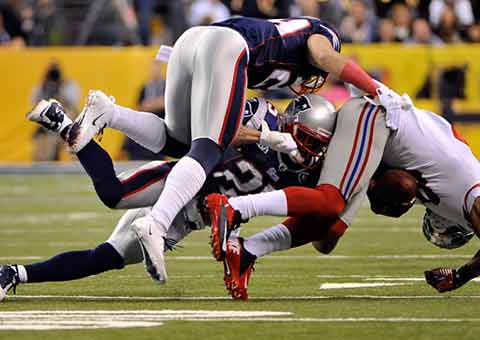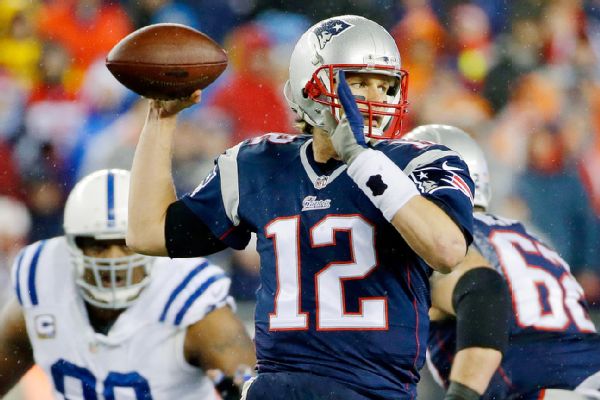Who has the highest chance of winning in the college level football this season? This article from Bleacher Report discusses statistics and general observations about the 2015 College Football Conference.
The SEC is the safest bet to rule college football next season, no matter how deep the Pac-12, how top-heavy the Big Ten and Big 12 or how underrated the ACC.
Why? Because in college football, past results predict future performance. The relationship isn't causal, but there is a strong correlation (.76) between the five-year F/+ program ratings at Football Outsiders and how a team fares the next season.
This concept can be extended to conferences—or at least it can in theory—so we've collated the average F/+ ratings from 2010 to 2014 and sorted by league.
The higher the F/+ rating, the better that conference has been than the FBS average (0.0). The next four columns show the percentage of each conference that falls in the top quartile, second quartile, third quartile and bottom quartile among Power Five teams:
Statistically, the SEC has been roughly twice as good as the ACC, Big Ten and Pac-12 the past five seasons.
The Big 12 has been comparable, especially with regard to distribution, but its top-tier teams (Oklahoma, Oklahoma State, TCU) have been far worse than those of the SEC (Alabama, LSU, Georgia).
Why is this important? Again, because as strange as it feels, looking backward is a big part of looking forward. It might even be the biggestpart. Football Outsiders elaborates on this point:
The strongest indicator of how a college football team will perform in the upcoming season is their performance in recent seasons.
It may seem strange because graduation enforces constant player turnover, but college football teams are actually much more consistent from year to year than NFL teams. Thanks in large part to consistency in recruiting, teams can be expected to play within a reasonable range of their baseline program expectations each season. Our Program F/+ ratings, which represent a rolling five-year period of play-by-play and drive efficiency data, have an extremely strong (.76) correlation with the next year’s F/+ rating.
If you disregard advanced stats, that's fine; you're well within your rights. And at least you have Charles Barkley in your corner! But in many ways you're arguing that two and two make five.
The SEC has been the best conference since 2010—and not by an insignificant margin—which gives it the best chance to be the best conference in 2015. Is it guaranteed? No. But it's probable.
And that's not even where the argument ends.
After past performance, the next strongest indicator of success is recruiting. How much talent has each conference signed?
Here's a look at the four-year recruiting averages, courtesy of the247Sports composite rankings:
The validity of star ratings is a popular argument, but again, as Matt Hinton of Football Study Hall explained last February, the numbers suggest they matter. They matter a lot.
There are obvious exceptions (Oregon, Michigan State, et al.), but in general the teams that recruit better play better.
"Arguably, [Alabama has] the greatest collection of football players ever assembled for a college team if the recruiting services are correct," South Carolina head coach Steve Spurrier said ;at SEC media days last summer. "And they're pretty much correct."
But even if you're dubious of recruiting rankings, the margin by which the SEC dominates should mean something. The table above is persuasive, but here are some additional fun facts.
Seven SEC teams (Alabama, LSU, Georgia, Florida, Auburn, Texas A&M and Tennessee) land in the top 13. No other conference boasts more than two. The Big Ten and Big 12 boast one apiece.
TCU and Arizona would be the No. 13 recruiting school in the SEC. Wisconsin and Georgia Tech would rank last. All four won either their division or their conference last season.
The No. 11 SEC recruiting school (Arkansas) would be No. 3 in the Big Ten and Big 12, No. 4 in the ACC and No. 5 in the Pac-12.
The extent of the SEC's talent advantage can be argued, but the existence of said advantage cannot. Or at least it can't be argued rationally.
This year, unlike previous years, the SEC combines that talent advantage with coaching stability, too. Twelve of 14 teams (86 percent) have head coaches entering at least their third seasons.
No other league has more.
In the past, predicting the SEC to be the best league in America was so obvious you didn't need to write it. It was like saying after the 2013 NBA Finals that LeBron James was the best player in basketball.
That the Big Ten (Ohio State) and ACC (Florida State) won the past two national titles has stained the SEC's luster, but it hasn't changed reality. Predicting the SEC to be the best league next season is like saying LeBron James is still the best player in basketball: no longer accepted as fact, but still almost definitely true.
Earlier this offseason, I collated the way-too-early rankings from multiple media outlets. The consensus had 10 SEC teams (Alabama, Ole Miss, Auburn, Georgia, LSU, Missouri, Arkansas, Tennessee, Mississippi State and Texas A&M) inside the top 28.
For emphasis: Ten inside the top 28!
It's not blind faith or SEC BIAS! informing those opinions, either. It's logic derived from some form of the numbers above.
The SEC has played like the best conference and recruited like the best conference, which gives it the best chance to stay the best conference, even if it didn't (and doesn't) win the national title.
Sometimes simple answers are the best.
Will McHale is a big sports fan and he especially enjoys football. Follow this Facebook page for the latest updates from the NFL and other football news.






















